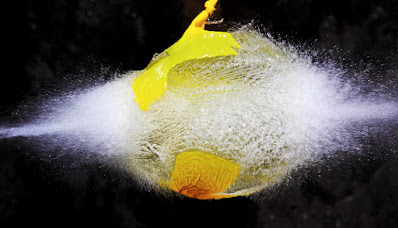FOSSILS SHOW LIFE’S RECOVERY AFTER DINO-KILLING ASTEROID STRIKE
A recently found collection of fossils reveals how life recuperated after the asteroid impact that erased the dinosaurs 66 million years back at completion of the Cretaceous Duration.
The unmatched find—thousands of extremely preserved pet and grow fossils from the first million years after the catastrophe—shines light on how life arised from among Earth's darkest hrs.
trik serta cara memilih situs slot online 2020
Researchers unearthed this new record from the first million years after the asteroid impact in the area about Colorado Springtimes, Colorado, which forms component of a bigger geological district known as the Denver Container. The find consists of both plants and pets, painting a picture of the development of the post-dinosaur globe.
"I've been functioning on this period and on these mammals for 21 years, and this is truly a remarkable home window right into this critical occasion in life background," says coauthor Greg Wilson, a teacher of biology at the College of Washington and curator of vertebrate paleontology at the Burke Gallery of All-natural Background & Society. "We change over from terrestrial ecosystems controlled by dinosaurs to those that become controlled by mammals in a geological blink of an eye."
FOSSILS SHOW HOW LIFE CHANGED
"The course of life on Planet changed radically on a solitary day 66 million years back," says lead writer Tyler Lyson, the curator of vertebrate paleontology at the Denver Gallery of Nature & Scientific research. "Blasting our planet, an asteroid set off the extinction of 3 of every 4 kinds of living microorganisms. While it was a truly bad time forever on Planet, some points made it through, consisting of some of our earliest, earliest forefathers."
A minute of serendipity pointed the way to these unusual fossil discovers. Lyson, that had been looking for post-impact vertebrate fossils without success, took inspiration from a fossil that had been being in a gallery cabinet and fossil-hunting methods used by associates in Southern Africa. In the summer of 2016, he quit looking for glinting little bits of bone in the Denver Container and rather zeroed know egg-shaped rocks called concretions.
Breaking open up the concretions, Lyson and coauthor Ian Miller, curator of paleobotany and supervisor of Planet and space sciences, found fossils such as the heads of mammals from the very early generations of survivors of the mass extinction. Since most of what is comprehended from this era is based upon tiny pieces of fossils, such as items of mammal teeth, finding a solitary head would certainly be remarkable. Lyson and Miller found 4 in a solitary day and greater than a lots in a week. Up until now, they've found fossils from at the very least 16 various mammalian species.



